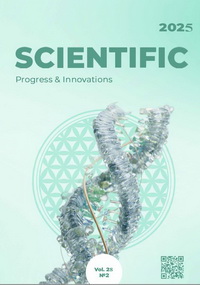The effectiveness of using external therapeutic means for dog dermatitis caused by fungi of the Trichophyton genus
DOI:
https://doi.org/10.31210/spi2025.28.02.28Keywords:
dogs, trychophytosis, treatment, ketoconazole, clotrimazole, staphylococci, sanoderm, skingardAbstract
In the present days, the pathology of dogs’ cutaneous covering caused by dermatomycoses is an extremely frequent phenomenon. As scholars’ data show, the pathogenic fungi from Trichophyton and Microsporum genuses have become the most widely spread in dogs. Taking into account the fact that the above mentioned genuses of fungi have a considerable zoonotic potential and can be dangerous for human health, the topicality of searching effective schemes of animals’ treatment for the diseases caused by pathogenic fungi remains an important issue that needs to be solved. Therefore, the purpose of this study was to find the therapeutic effectiveness of external curative means for the treatment of dog dermatophytosis caused by fungi of the Trichophyton genus. The work was conducted in the “Aibolyt” clinic in the city of Poltava during 2023-2024. To make the experimental studies in determining the mycocidal effect of etiotropic preparations produced in Ukraine – “Sanoderm” ointment and “Skingard” spray for external use (“Arterium” corporation, Ukraine) in connection with “Vetderm” (“Brovapharma” LLC, Ukraine) preparation of symptomatic effect – 2 groups of dogs were formed, five animals in each, on the cutaneous covering of them 4–6 trichophytic locuses having a diameter from 2.0 to 2.6 cm were found. Anti-fungus and symptomatic preparations were applied according to the producers’ recommendations. The effectiveness of treatment was controlled by the animals’ examination, mycological and bacteriological studies of the biological material. The research has shown that both treatment schemes are effective in the therapy of dogs attacked with fungi of the Trichophyton genus. The use of “Sanoderm” ointment in connection with “Vetderm” preparation of symptomatic effect led to rapid ruining of the pathogenic fungus, which was characterized by a low growth intensity of the latter on Saburo agar on the 14th day (the growth of single colonies) and the absence of dermatophyte growth in inoculations from the material on the 21st day. However, this scheme did not manifest a bactericidal effect on staphylococci. On the 14th and 21st days after the beginning of the treatment, the growth of Staphylococcus spp. microorganisms was fixed in the inoculations from the biological material of all the dogs from the experimental group. Moreover, the mycocidal action was less expressed in the animals that were treated with “Skingard” spray preparation together with “Vetderm” preparation as on the 14th day from the beginning of treatment, the growth of fungi from Trichphyton genus was detected in the samples of biological material from all the animals of the experimental group, and on the 21st day – in 40 % of animals from the experimental group. But when using the proposed treatment scheme, the expressed bactericidal effect was found concerning Staphylococcus spp. Both on the 14th and 21st days of studying, staphylococci growth in each of the biological material inoculations from the animals of the experimental group was not revealed. The obtained results allow recommend “Sanoderm” ointment in connection with “Vetderm” preparation for the treatment of dogs with the cutaneous covering lesions with the fungi of Trichophyton genus. In cases of dogs’ cutaneous covering lesions with the fungi from Trichophyton genus in connection with Staphylococcus spp., it is recommended to use the treatment scheme including “Skingard” spray preparation in combination with the means of symptomatic therapy.
Downloads
Published
How to Cite
Issue
Section
License
Copyright (c) 2025 Scientific Progress & Innovations

This work is licensed under a Creative Commons Attribution 4.0 International License.

 Creative Commons Attribution 4.0 International Licens
Creative Commons Attribution 4.0 International Licens